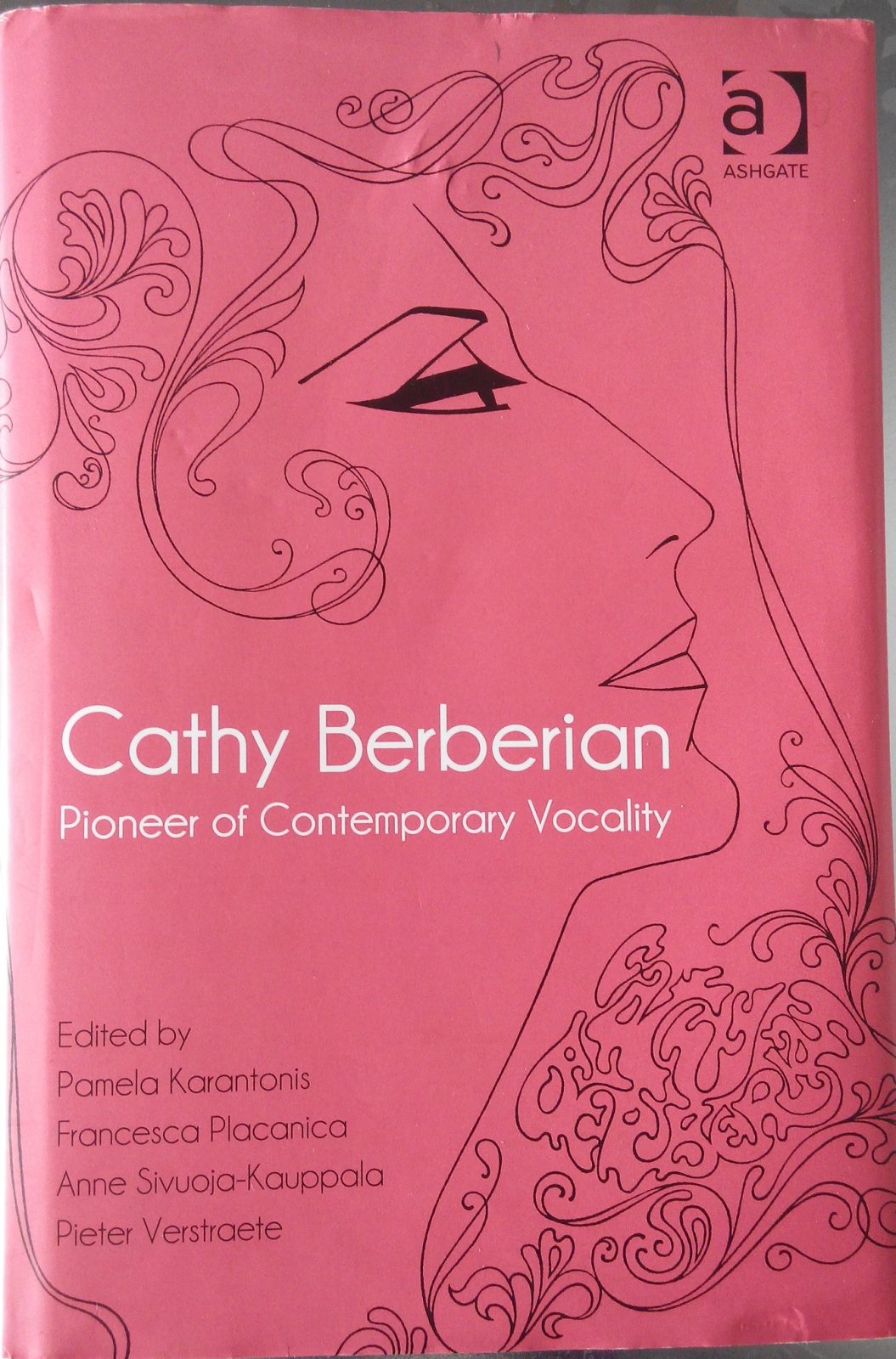American-Italian voice artist Cathy Berberian (1925-1983) has gone down in history as "the wife of Luciano Berio", the Italian composer with whom she realised such high-profile pieces as Circles, Sequenza III, Recital I for Cathy and Theme, Omaggio a Joyce. Yet they were married for only 14 years, from 1950 to 1964.
 Moreover, it is common knowledge that she had a major compositional share in the music written for her, not only by Berio, but also by such luminaries as John Cage, Bruno Maderna and Igor Stravinsky. To (re)give this phenomenal performer her rightful place in history, a number of feminist music scholars joined forces for the book Cathy Berberian, Pioneer of Contemporary Vocality which was published by UK publisher Ashgate in 2014.
Moreover, it is common knowledge that she had a major compositional share in the music written for her, not only by Berio, but also by such luminaries as John Cage, Bruno Maderna and Igor Stravinsky. To (re)give this phenomenal performer her rightful place in history, a number of feminist music scholars joined forces for the book Cathy Berberian, Pioneer of Contemporary Vocality which was published by UK publisher Ashgate in 2014.
No luxury, as even the prestigious Oxford Dictionary of Music and Musicians devotes only a minuscule lemma to Berberian, who nevertheless shed an entirely new light on the (expressive) possibilities of the human voice. Within seconds, she effortlessly switched between cat meows, dog barks, firm tongue clicks, infectious bird twittering or flawless colouraturas.
With her unprecedented virtuosity, she inspired generations of singers, vocalists and composers to explore every imaginable limit. From the very beginning, she also embraced the possibilities of electronics, which enabled new vocal effects to be generated. She has been called the 'Maria Callas of contemporary music'. Without Berberian, there would be no Meredith Monk, Laurie Anderson or Diamanda Galas, or closer to home, Greetje Bijma.
Unlike the prevailing image, Berberian certainly did not limit herself to the work of the avant-garde, but presented arias by Monteverdi, songs by the Beatles and folk music with equal love and ease. As opposed to slavishly following the note text, she placed a lived interpretation, bringing any text to life. For instance, she sang in Monteverdi's L'Orfeo at the invitation of Nikolaus Harnoncourt. The early music pioneer was struck by her ability to turn every performance into a theatrical happening. She emphatically involved the listener too, describing herself as a "cant'actrice", a singer who acts out the music being performed. [Tweet "Voice artist Cathy Berberian made every performance a theatrical happening"]
Like many scientific publications, it has Cathy Berberian, Pioneer of Contemporary Vocality an often hermetic use of language and an overdose of repetition. For the go-getter, however, there is much to discover, as it zooms in on Berberian's close collaboration with living composers. Central to this is her own share in the compositions that others wrote for - but thus, according to the authors, mainly with - her.
Such as, for example Theme, Omaggio a Joyce, which originated in 1958 at the Studio di phonologia musicale di Radio Milano, which had been founded three years earlier by Berio and Maderna. This composition is always attributed to Berio, but it was Berberian who suggested the idea of the novel Ulysses of James Joyce as the starting point for a composition - Berio did not even master English at the time. Berberian's reading of the chapter 'Sirens' is cut up into fragments and edited by electronic processes. This creates a musical counterpart to Joyce's deconstructivist texts.
The creation of Aria of Cage, with whom Berberian broke through in 1959 in Darmstadt, the beating heart of the avant-garde, the authors largely attribute to Berberian. During a stay in Milan, Cage frequently visited her and Berio and became fascinated by their experiments with tape compositions. He was particularly inspired by Berberian's own trials, in which she used lightning-fast tape montages to bounce her use of voice and expression from one extreme to another. When Cage suggested they write a piece together, she gave him lyrics in Armenian, Russian, Italian, French and English. The American cut these up into short pieces to be performed in different vocal styles, to be chosen by the performer. Berberian chose a broad palette for her interpretation, ranging from jazz, spoken voice and baby sounds, to coloraturas, orientalisms and a Marlene Dietrich style.
Her compositional part in the pieces that composers such as Sylvano Bussotti and Bruno Maderna wrote for her is also highlighted in depth, as are her own sparse compositions, including, for example Stripsody. Because of her incisive interpretations, self-designed costumes and carefully thought-out gestures, the authors consider Berberian not only the 'composer' of her own performances, but at the very least a co-composer of the pieces of others. Indeed, many of these are said to be so strongly tied to her personality that they are still rarely performed. A brief internet search partly confirms this - Aria by Cage is actually performed regularly. Incidentally, the constant hammering on her (co-)authorship is somewhat counterproductive in the long run - we know it now.
Cathy Berberian, Pioneer of Contemporay Vocality is beautifully designed, with the cover featuring Roberto Zamarin's characteristic drawing accompanying her self-written credo 'I fell down a rabbit hole into the wonderland of music...', in which she describes how, thanks to music, she escaped the banality of a lower-middle-class life at an early age. Berberian emerges as a powerful, independent and extremely talented woman, occupying a unique and therefore inimitable place in music history. Unfortunately, the price of almost 100 euros for less than 250 pages is not very audience-friendly. And that is a pity, because it is a deserved tribute to the flamboyant and creative Berberian.
Cathy Berberian, Pioneer of Contemporay Vocality
editors Pamela Karantis; Francesca Placanica; Anne Sivuoja-Kauppala; Pieter Verstraete
Ashgate Publishing Limited, Farnham, England
Hardcover, 249 p. £65 (€99.99/ebook €90.86)
